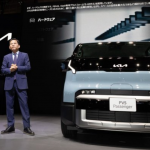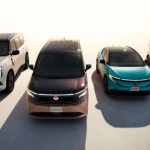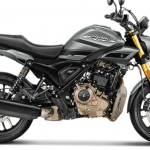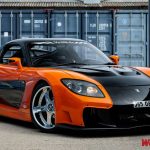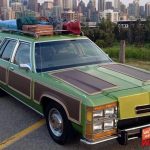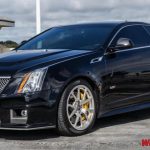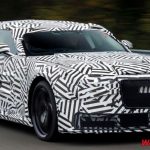In India’s slowly growing roadster segment, two striking contenders are generating buzz among performance and lifestyle enthusiasts — the MG Cyberster, an all-electric convertible, and the BMW Z4, a well-established petrol-powered roadster with German DNA. While both appeal to those seeking sporty aesthetics and thrilling drives, they come from very different backgrounds in terms of powertrain, price, and technology.
With MG aiming to deliver an affordable electric sports car, and BMW offering a legacy of luxury roadsters, the Indian consumer now has a tough decision to make. Let’s break it all down.
1. Design & Exterior Styling
MG Cyberster is a futuristic-looking two-door convertible that draws inspiration from gaming culture and digital lifestyles. Its sleek profile, scissor doors, LED light bar at the rear, and aggressive aerodynamic lines make it look more like a concept car than a production model. It’s bold, edgy, and screams “next-gen.”
BMW Z4, on the other hand, is a timeless beauty. Its long hood, short overhangs, kidney grille, and muscular lines create an elegant yet sporty character. It retains the classic roadster appeal — understated but powerful.
Verdict: If you prefer innovation and attention-grabbing looks, Cyberster wins. But for those who love traditional luxury with a sporty edge, Z4 remains iconic.
2. Powertrain and Performance
The MG Cyberster is all-electric, offered in RWD and dual-motor AWD versions internationally. The top variant pushes out 536 PS of power and 725 Nm of torque, enabling it to go from 0 to 100 km/h in under 3.2 seconds. The EV powertrain delivers instant torque, high responsiveness, and quiet performance.
The BMW Z4 M40i, with its 3.0L inline-6 turbocharged petrol engine, produces 340 PS and 500 Nm torque. It hits 0 to 100 km/h in around 4.5 seconds, which is still impressive and comes with the signature growl of a BMW performance engine.
Verdict: MG Cyberster leads in straight-line performance thanks to EV torque and acceleration. But for those who love engine noise and traditional driving thrills, the Z4 has the edge.
3. Interior Features & Cabin Quality
Inside the MG Cyberster, you’ll find a digital driver-centric layout, triple-screen displays, minimalist dashboard, and red-black sporty upholstery. It emphasizes a tech-driven interface that resonates with Gen-Z and EV lovers.
In contrast, the BMW Z4 offers classic cabin luxury — leather seats, ambient lighting, Harman Kardon audio system, and a premium-feel layout. The cockpit is focused, elegant, and built for long-distance comfort.
Verdict: BMW wins for luxury feel and material quality. MG Cyberster scores in futuristic tech and digital appeal.
4. Range & Efficiency
This is where the MG Cyberster shines. It comes with a claimed range of 450–500 km on a full charge, depending on the variant. Fast charging capabilities ensure quick top-ups during road trips.
The BMW Z4, being a petrol vehicle, has a mileage of around 11–13 kmpl, making it less efficient and expensive to run, especially in urban conditions.
Verdict: MG Cyberster dominates with electric range, lower running cost, and zero tailpipe emissions.
5. Technology & Connectivity
The Cyberster is loaded with ADAS, connected car tech, AI-based infotainment, over-the-air (OTA) updates, and 5G-ready connectivity. It’s built for the modern, tech-hungry user.
BMW Z4 offers gesture control, wireless Apple CarPlay/Android Auto, BMW Live Cockpit, and a digital key. While it’s high-end, it lacks the level of futuristic tech MG is pushing.
Verdict: MG Cyberster edges ahead in smart tech and AI integration.
6. Driving Experience
MG’s electric powertrain ensures a smooth and silent ride, especially in city traffic. The lower center of gravity helps with handling, although purists might miss the mechanical feel.
BMW Z4’s rear-wheel-drive and perfectly balanced chassis offer a more visceral and engaging drive. With adaptive suspension and launch control, it’s more tuned for spirited driving.
Verdict: BMW Z4 wins in pure driving dynamics. MG Cyberster is better for futuristic comfort and torque fun.
7. Pricing & Availability
The MG Cyberster is expected to be priced around ₹50–60 lakhs, which is groundbreaking for an electric convertible in India. It makes owning an EV roadster more realistic for the premium buyer.
The BMW Z4 M40i starts at ₹90+ lakhs (ex-showroom) in India. Even the lower sDrive20i petrol version costs ₹75–80 lakhs, making it significantly more expensive than the Cyberster.
Verdict: MG Cyberster delivers value-for-money performance and EV features, while BMW offers a premium badge and heritage at a premium price.
8. Practicality & After-Sales
While BMW has a robust service and dealer network in India, MG is expanding steadily. However, EV charging infrastructure still remains a concern outside metro cities.
Boot space and practicality are minimal in both, but the BMW Z4’s hard-top (now soft-top) and wider network may appeal more to traditional users.
Verdict: BMW scores higher on after-sales, while MG offers better practicality for city driving.
Final Verdict: Which Roadster Should You Buy in 2025?
If you’re a tech enthusiast, want thrilling electric performance, and are value-conscious, the MG Cyberster is a game-changer. It’s futuristic, fast, and significantly cheaper.
However, if heritage, engine roar, and refined luxury matter more to you — and you’re willing to pay a premium for it — the BMW Z4 remains a classic and compelling choice.
MG Cyberster is the roadster of the future, while BMW Z4 is a timeless icon of the present. The choice depends on which side of the automotive revolution you want to be on.

Hello, my name is Muskan Kumari and I am an experienced Digital Marketer. I have been blogging for the last 3 years and I have special interest in SEO. Here I give you easy bikes and writes easy-to-understand reviews and news about the latest bikes, helping readers choose the best options.. My aim is to always provide you with accurate, new and useful information.


